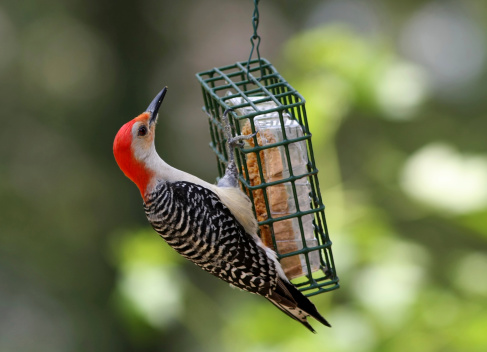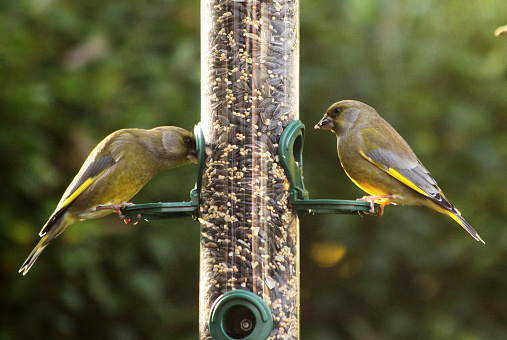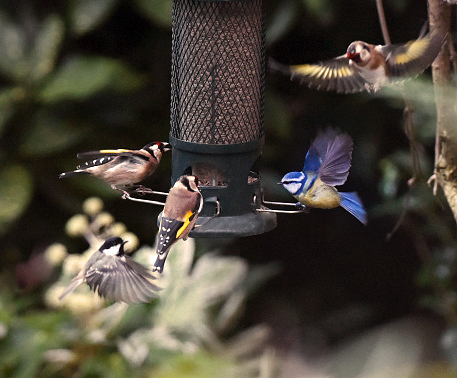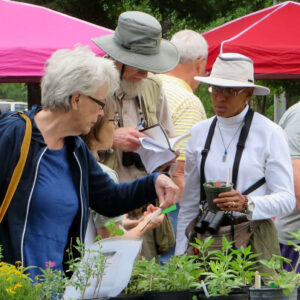Wishing there was a bit more color in your winter garden? Feed the birds! This simple activity is a fun and easy way to liven up your landscape.
By Calvin Finch, Ph.D.
Bird feeding is a fun and easy way to enhance the winter garden in San Antonio. Insect-eating birds like woodpeckers, starlings, kinglets, wrens and warblers will be attracted if you provide suet. Suet blocks come in every flavor you can think of. The pepper flavor is avoided by squirrels, but not by birds. Seed blocks resemble suet blocks and are also offered in wire baskets. The baskets limit the amount of “block” that blue jays and squirrels can remove at a setting. The pecan-impregnated blocks are the favorite flavor, but do not last long.

Thistle feeders have become very popular. The long tubes with numerous small holes attract the finches. The lesser goldfinches and housefinches are attractive with their respective black and golden and pink-red coloring. The American goldfinches are often called wild canaries because of their striking gold color during the breeding season. In the winter, they are a drab green-yellow color, but they tame easily and are acrobatic at the feeder. Their antics make a thistle feeder well worth the effort.

The favorite birdseed is sunflower seed. All the seed eaters and even some insect eaters will visit a feeder for the oil and protein-rich seed. To preserve the seed for finches, titmice and chickadees, offer the seed in a metal feeder with a weightsensitive perch. The steel construction material keeps the squirrels from chewing through the feeder, and the weightsensitive perch can be set to exclude white wing doves, squirrels, and even blue jays and grackles if you set it light enough.

South Texas winters can be dry, so water also attracts a large number of birds. Rinse out and refill a shallow birdbath every day or two to provide drinking water and bathing water for area birds. It is unlikely that cedar waxwings will be attracted to your feeders but the beautiful birds will arrive in flocks for long drinks of water in between their forays to eat all the hackberry, holly, possumhaw, and Wax myrtle in the neighborhood.
Calvin R. Finch is a director at Texas A&M Water Conservation and Technology Center.


